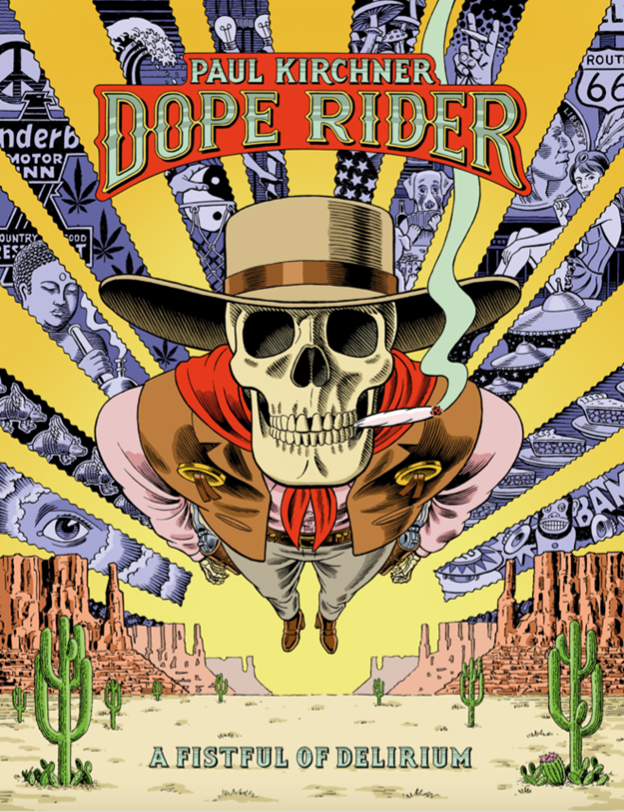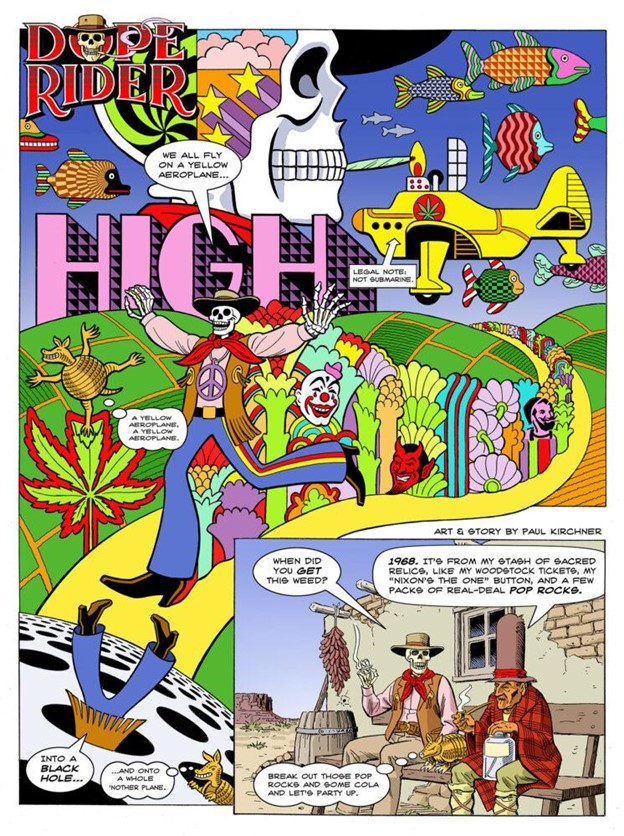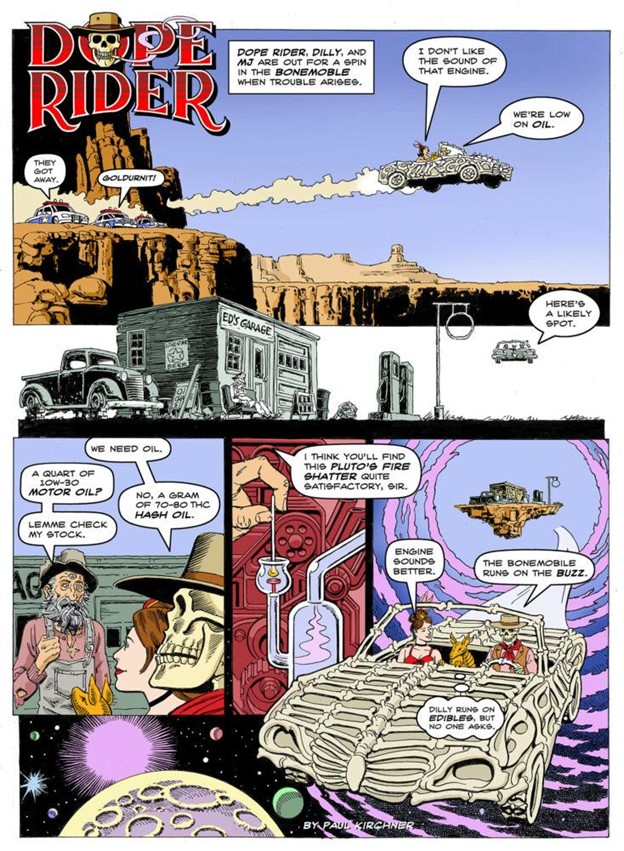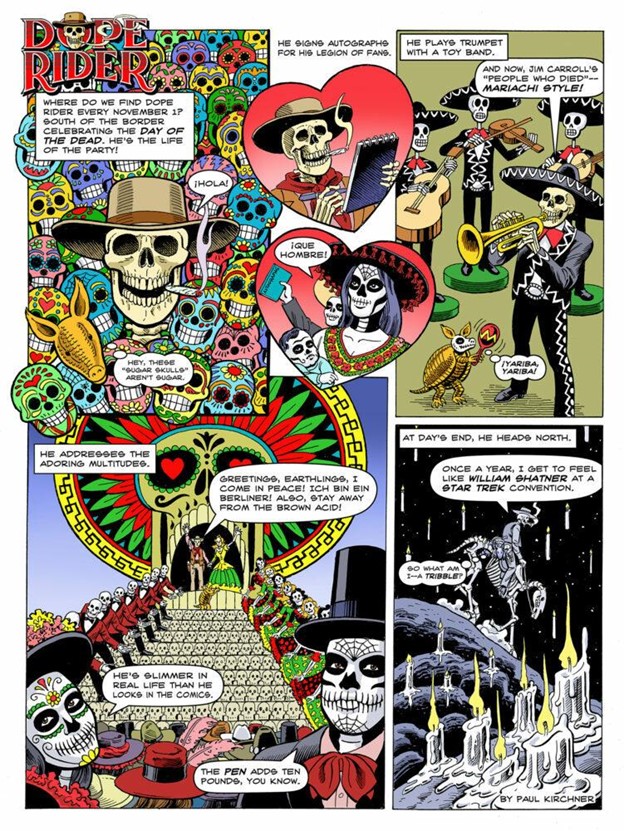
I’ll be honest: as a source of relaxation, entertainment, and, in a pinch maybe, even inspiration, pot/weed/whatever the kids are calling cannabis these days stopped being relevant to me a good couple of decades ago, but, as sheer cultural currency, it appears to be more relevant than ever. Hell, if there’s one thing that unites everyone from Wall Street CEOs to disaffected suburban youths to so-called “gang bangers” to stressed-out parents looking for a break, it’s that everyone enjoys getting high these days. This is clearly evidenced by the fact that more and more states have thrown in the towel on the always-ludicrous idea of pot prohibition and have now embraced cannabis instead as a veritable tax bonanza. Also, the once marginally-underground 420 “holiday” is now a positively mainstream staple on the calendar. “Everybody must get stoned,” I seem to recall, and in 2021 everybody is — everybody, that is, except for yours truly.
Under such circumstances, it’s hard to say how relevant venerable “cannabis culture” magazine High Times still is, what with many of its social and legislative battles already “won,” so to speak. However, it seems to be surviving in a marketplace that has seen about ¾ of the print publications that used to exist fall by the wayside. So, hey, they must be doing something right — and in 2015, one of those “somethings” was convincing veteran cartoonist Paul Kirchner to resurrect his skeletal stoner protagonist for a new series of one-pagers, five years’ worth of which were collected earlier this year by French publisher Editions Tanabis under the blanket title of Dope Rider: A Fistful Of Delirium. And why not? One way or another, a market for “pothead comix” will always exist.

This actually marks the fourth collaboration for this artist/publisher tandem, preceded most recently by 2017’s Awaiting The Collapse, a bumper volume consisting of 40 year’s worth of strips, cover illustrations, and general artistic ephemera, and this new handsome hardcover replicates the physical dimensions and overall exceptionally high production values of that book, so there’s no need to worry about whether or not you’re getting plenty of bang for your 30 bucks here — it’ll look gorgeous on your bookshelf. But hey, as we all know, it’s what’s on the inside that counts, and on that score, despite tonal and thematic incongruities that pop up from time to time, it’s rather hard not to admire what Kirchner’s achieved with this one, even if you’re well past the point of partaking in the “demon weed” yourself.
Mind you, I’m in no way, shape, or form saying that there’s anything earth-shaking or even consciousness-shaking on offer here. These are comics with a narrow remit designed to appeal to a dedicated readership, after all, a literal case of preaching to the choir — but the ease and comfort with which Kirchner is able to slide back into working on a character whose “pop metaphysical” adventures he’d last delineated 30 years previously is pretty remarkable in and of itself (I’d like to see Cheech and Chong try the same thing — or maybe not), and the fact that nothing here seems utterly at odds with what one would both expect and, if you’re a fan, hope for, is even more remarkable. Not content to rest on his laurels and simply re-hash a tried and true concept, Kirchner avoids the easy trap of serving up “greatest hits”-type scenarios here. Instead, he leans into the dated nature of his own cultural lexicon as a source of humor, admitting with a wink and nod that, yeah, stuff like The Lord Of The Rings and The Matrix is kinda old hat by now. Kirchner asks us to roll with the references anyway and delivers solid enough little narrative pay-offs along the way. Even when Kirchner doesn’t resort to direct “Fourth Wall” busting (which, to his credit, he does with a fair degree of easy-going panache), his implicit “we’re all just here for a good time” tone functions as a kind of sub rosa agreement between artist and audiences that frees both up to have precisely that.

Which, admittedly is probably a far more pretentious statement than anyone has ever made with regards to a strip about a dope-smoking magical skeleton, but still — it applies. As do just about any superlatives one cares to toss in the direction of Kirchner’s art, a veritable feast for the eyes at all times that will astound you with its detail, its richness, its colorful vibrancy, its meticulously thought-through composition, and its wonderfully inventive page layouts, replete as they are with references to everyone from Escher to Jodorowsy to Herriman to Leone to Bosch to Griffith. If you’re buying this book, you’re likely buying it for the art, and not only will you not be disappointed, you’d do well to come into it prepared to be impressed by not only how much creative juice Kirchner still has in his tank, but how skillfully he’s managed to hone, refine, and even elevate the level of his craft over the years.

Still, as seriously as I’m duty-bound to examine this stuff in my role as a critic, taking it all too seriously both misses the point and, in a very real sense, defeats the purpose of the work. At the end of this day, these are comics constructed for purposes of eliciting exactly one response from their readers: ‘dude, that’s some far-out shit.” And even after all these years, Kirchner does that better than just about anybody else you’d care to mention — assuming you’re not so high that you can’t even remember your own name.
SOLRAD is made possible by the generous donations of readers like you. Support our Patreon campaign, or make a tax-deductible donation to our publisher, Fieldmouse Press, today.

Leave a Reply